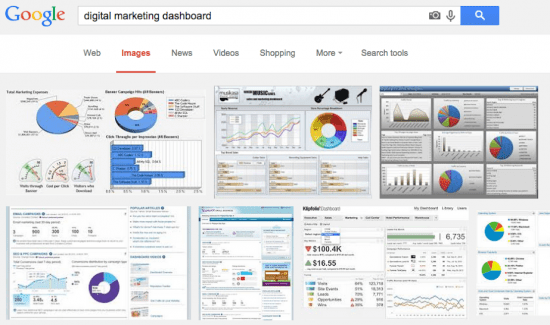Practices agencies should avoid when reporting digital marketing performance to clients, and tips for how to get it right

 As marketers, and humans for that matter, we’ve all been guilty of committing (at least) one of the seven deadly sins in one way or another. You won’t have Brad Pitt and Morgan Freeman hunting you down, but when it comes to marketing agencies, committing these reporting sins can be deadly to the agency/client relationship.
As marketers, and humans for that matter, we’ve all been guilty of committing (at least) one of the seven deadly sins in one way or another. You won’t have Brad Pitt and Morgan Freeman hunting you down, but when it comes to marketing agencies, committing these reporting sins can be deadly to the agency/client relationship.
Deadly reporting Sin 1: Avarice
Otherwise known as greed, Avarice is a sin of excess. Clients want and need to know what their agency is doing to move the needle, but consistently sending them an overly-comprehensive reports can be a lose-lose for the client and the agency.
Massive reports take agencies a lot of time to prepare, billable hours that could be better spent acting on your findings. And since the operative term here is billable, clients waste money to learn extraneous details when all they really want to know is what happened, why it happened, and what to do about it.
Tips for writing clear and concise reports:
- Use simple terms; don’t try to wow your clients with your technical vocabulary. Explain concepts in plain English.
- Start with a simple summary then give deeper analysis by Channel.
Deadly reporting Sin 2: Lust
This one is all about seeing what you want to see and then fitting that fantasy into your own desires. And when it comes to client reporting, it’s a decidedly unsexy move. You’re not doing your agency or your client any favours by fudging numbers, sugar-coating insights, or flat-out ignoring negative results.
These reports are as important to the success of your agency as they are to the success of the client. Don’t hide negatives - discover their causes and present solutions.
Deadly reporting Sin 3: Gluttony
Have you ever sent your client a dashboard? You’ve probably helped your clients pig out on chart junk. Like junk food, dashboards are easy to consume and filled with empty calories.
The typical dashboard is cluttered and overwhelming, packaged more for looks than relevance or ability to drive action and understanding. It’s easy for marketers to add one neat feature or number after another, taking focus away from big insights. More importantly, dashboards require further interpretation, creating more work for your client and putting your agency at a disadvantage if the data deluge you’re sending them is misinterpreted.
Here’s a screenshot from a recent 'digital marketing dashboard' Google search. Anyone up for some mental gymnastics? I didn’t think so.

Clients are paying you for insight and action. Don’t send a chart when a few words will do. Visualizations alone simply cannot meet that need, it requires narrative. A picture is not worth 1,000 words. Stories need to be told, use charts and visualizations to complement written analysis.
Tips for using charts and visualizations within client reports
- Charts should show long-term trends of 6 months or more.
- Limit pie charts. Humans are bad at deciding whether one slice is bigger than another. Use bar charts instead.
- Stick to best practices: How to make awesome charts in Excel.
- Save chart layouts in Excel so you can reuse them easily.
Deadly reporting Sin 4: Sloth
Don’t. Be. Lazy. After all, marketing is one big test. There’s successes and failures. You test, measure, optimize, rinse and repeat.

The ultimate sloth move, of course, is not reporting at all. I sincerely hope no one is guilty of this. Unless the sloth is your competitor. In that case, you have my personal permission to steal all of their clients. They probably deserve it.
Deadly reporting Sin 5: Wrath
Reporting can suck sometimes - but don’t resent the reporting process or, even worse, your client. It might be 11pm on the night before the quarter ends, but seething with rage probably isn’t the best way to get you work done. You’re a marketer. You signed up for this.
Wrath can also show up as impatience. There’s no marketing magic bullet. Building a positive, profitable marketing process takes time. When you’re setting goals with your clients, be sure to set proper expectations.
Deadly reporting Sin 6: Envy
Competitor analysis is standard marketing practice. You need to know what your client’s competitors are up to and how they are doing. Just don’t make it a standard reporting practice - remember that avarice thing? More importantly, don’t don’t let competitors marketing activities dictate your own.
Create marketing campaigns and tactics based on your data and the insights you glean from it. It’s not to say that you can’t poach a tactic here and there to test whether something similar will work for your client, but do not do something just because your competitor is. Make your marketing better because you fully understand your client, their target(s), and what your analysis tells you will work. Then optimize the hell out of it, rather than ending up in marketing hell.
Deadly reporting Sin 7: Pride
You may think you know it all and that your reports can show it all. To you I say: slow your roll, Prideful Patty. This is digital marketing we’re talking about - there is always something new to learn.
And don’t think that a polished report is any substitute for direct, sometimes messy conversations with clients. Ever spend hours on a report only to realize the client barely skimmed it and just wants to talk to you for five minutes instead? That’s the way it goes sometimes.
Care to add a few more sins to this list? Hit us up on Twitter @MktgRobot.
[Editor's note: We invited this contribution after the Q&As in our Answers Community asking: Which are the best agency marketing reporting tools for Google Analytics]
Image/Copyright: Flickr
Thanks to
Kieran Wilson for sharing their advice and opinions in this post. Kieran Wilson is Digital Marketing Manager of Automated Insights, which features an automated reporting tool for digital marketing agencies
Wordsmith For Marketing. You can follow her on
Twitter or connect on
LinkedIn.









